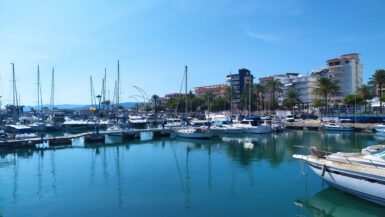If you’re planning a trip to the Valencia region and want somewhere that combines a proper Spanish town with excellent beaches, Gandia is worth considering. The city gives you two distinct experiences – there’s the old town about 3 kilometres inland with medieval architecture and local life, plus the beach resort area right on the Mediterranean. You can easily get between both, so you’re not stuck choosing one or the other.
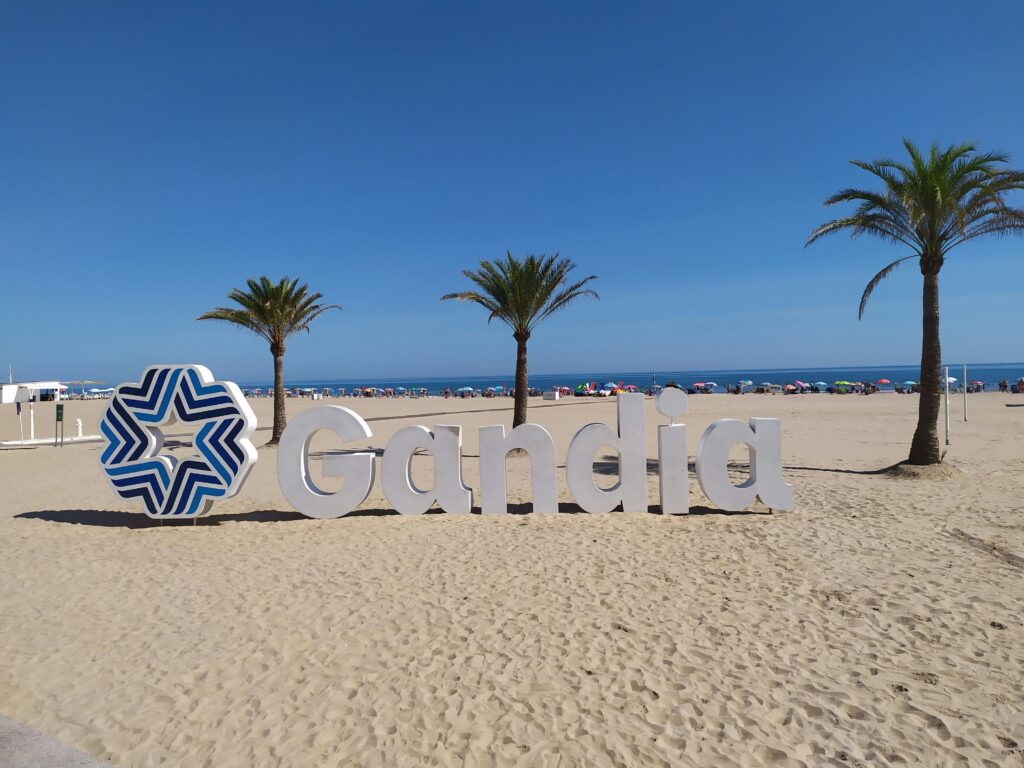
I’ve put together this complete guide to help you make the most of your visit to Gandia, covering everything from the historic old town to the modern beach resort area.
Where is Gandia?
Gandia sits on the Mediterranean coast in the Valencia region, about 65 kilometres south of Valencia city. It’s perfectly positioned between the mountains and the sea, making it an ideal base for both beach lovers and those wanting to venture inland.
The city is split into two main areas: the historic town centre about 3 kilometres inland, and Gandia beach, the modern beach resort area right on the Mediterranean. You can easily travel between both areas by local bus or a short taxi ride.
Getting to Gandia
The easiest way to reach Gandia is by flying into Valencia Airport, which is about 75 kilometres north. From there, you can rent a car for the hour-long drive, or take the regular bus service that runs several times daily.
If you’re coming from other parts of Spain, Gandia has excellent train connections. The city sits on the Valencia-Alicante railway line, making it easily accessible from major Spanish cities.
What to do in Gandia
Los Borja Ducal Palace of Gandia
The Ducal Palace is absolutely fascinating and tells the story of one of Spain’s most powerful families, the Borgia dynasty. Saint Francis Borgia was born here in 1510, and the palace has been beautifully preserved to show how nobility lived during the Renaissance.

The guided tours are really informative, taking you through the ornate rooms, courtyards, and chambers. You’ll see incredible tilework, painted ceilings, and learn about the palace’s role in Spanish history. Tours run several times daily, and I’d recommend booking in advance during peak season.
You can buy tickets through Get Your Guide for €7 per person here:
Gandia’s old town
The historic centre is a joy to wander around, with narrow medieval streets, traditional Spanish architecture, and plenty of local shops and cafes. The main square, Plaça Major, is surrounded by beautiful buildings and is perfect for people-watching over a coffee.

You’ll find several lovely churches here, including the Collegiate Basilica of Gandia, which dates back to the 14th century. The old town has a really authentic feel – you’ll see locals going about their daily business rather than just tourists.
Gandia beach
The beach here is genuinely one of the finest on the Valencia coast. It stretches for about 3 kilometres and the sand is golden and soft. The water is clean and usually calm, making it perfect for families.
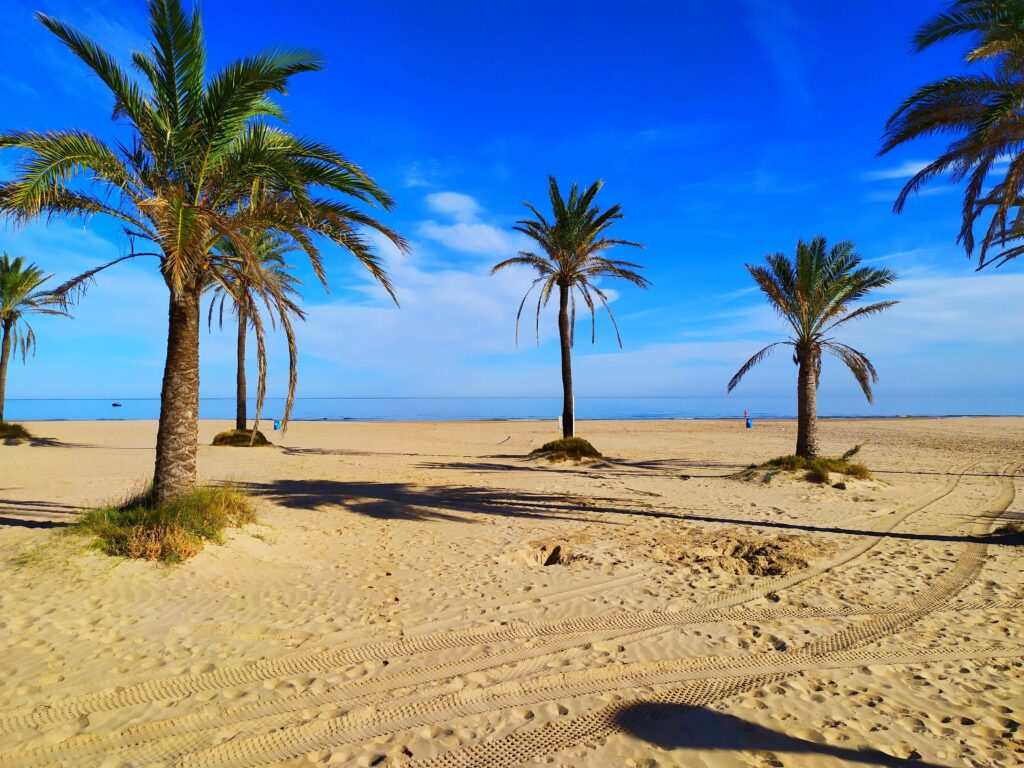
During summer, the beach is well-equipped with sunbeds, umbrellas, and beach bars. There’s also a lovely promenade running along the entire length, perfect for evening strolls or morning jogs.
If you’re after something quieter, head to the northern end of the beach where it’s usually less crowded.
Playa de Venecia
Just south of the main beach, you’ll find Playa de Venecia, which tends to be a bit quieter than the main Gandia beach. It’s still well-serviced with facilities but has a more relaxed atmosphere.

Day trips from Gandia
Xàtiva
About 40 kilometres inland, Xàtiva is a historic town famous for its impressive castle perched high on a hill. The castle offers incredible views over the surrounding countryside, and the town itself has a lovely old quarter with traditional Spanish architecture.
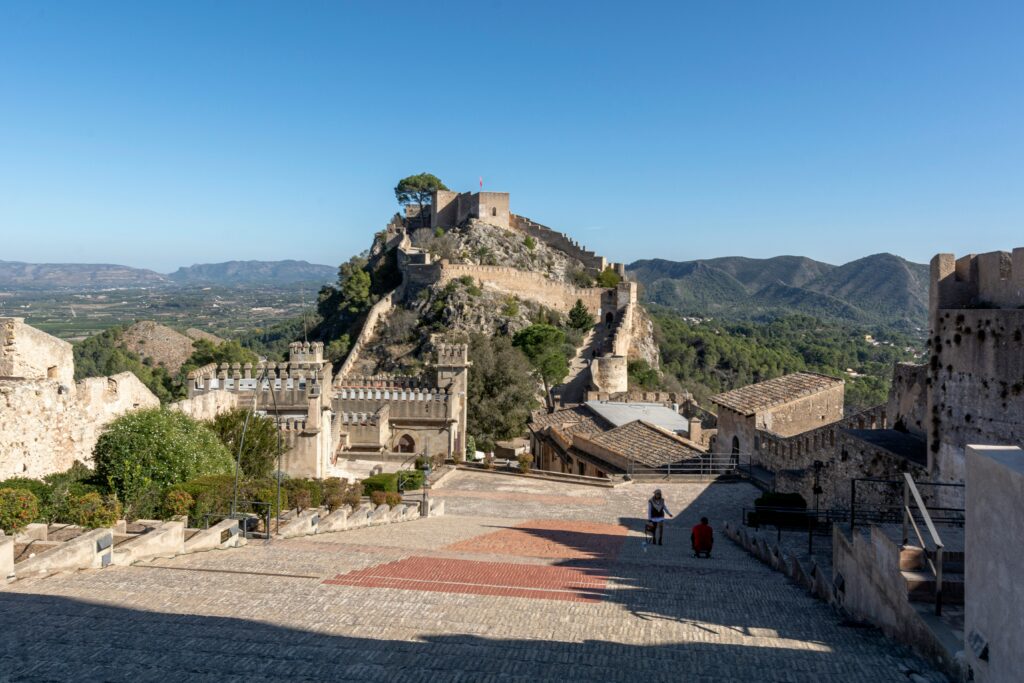
Cullera
This charming town is just 20 kilometres north of Gandia and offers a perfect mix of beach, history, and mountain scenery. The castle here dates back to the 13th century and provides stunning views over the Mediterranean.
Denia
About a 40 minute drive south, Denia is another beautiful town with the historic Denia castle, excellent restaurants, and lovely beaches. It’s also the departure point for ferries to the Balearic Islands if you fancy a day trip to Ibiza or Mallorca.
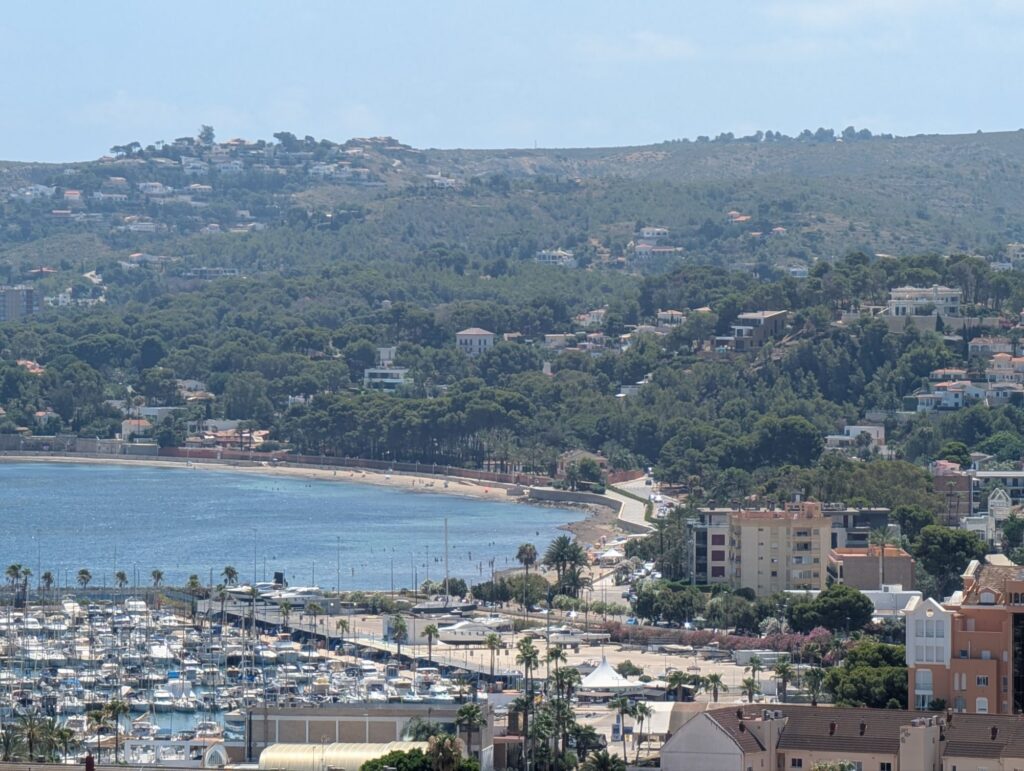
Where to eat in Gandia
Gandia is food heaven, particularly if you love rice dishes and fresh seafood. The city is famous for its paella, and you’ll find some of the best rice restaurants in Spain here.
Restaurante Marisquería Gambrinus in the Grau district is fantastic for seafood. The prawns and rice dishes are outstanding, and the atmosphere is authentically Spanish.
Casa Roberto near the old town serves traditional Valencian cuisine in a family-run setting. Their paella is exceptional, and the portions are generous.
For a more upmarket experience, Restaurante Kaymus offers modern Spanish cuisine with a focus on local ingredients.
Don’t miss trying the local speciality, fideuà – it’s like paella but made with thin noodles instead of rice. Most restaurants here do an excellent version.
Practical information
Getting around
Gandia is quite walkable within each area, but you’ll need transport to move between the old town and beach area. Local buses run regularly, or you can take a taxi which costs around €10-15.
If you’re planning to visit nearby towns or want the freedom to move around at your own pace, renting a car is a good option.
Best time to visit
Summer (June to September) is perfect for beach activities, with temperatures around 28-30°C and plenty of sunshine. However, this is also when it’s busiest and most expensive.
Spring (April to May) and autumn (September to October) offer the best balance – still warm enough for the beach but with fewer crowds and better prices. The weather is usually lovely during these months, with temperatures around 20-25°C.
Language
Spanish and Valencian are the main languages spoken here. English is understood in tourist areas and hotels, but having some basic Spanish phrases will be helpful, particularly if you want to venture into the more authentic local areas.
Accommodation
The beach area has plenty of hotels and apartments, ranging from budget-friendly options to luxury resorts. If you prefer a more authentic experience, consider staying in the old town where you’ll find charming guesthouses and boutique hotels.
Book well in advance if you’re visiting during summer, as accommodation fills up quickly during peak season.
Gandia offers that perfect combination of history, culture, and beach relaxation that makes the Valencia region so appealing. You’ll find it’s large enough to offer plenty to do, but small enough to maintain that authentic Spanish charm that many other destinations have lost.


